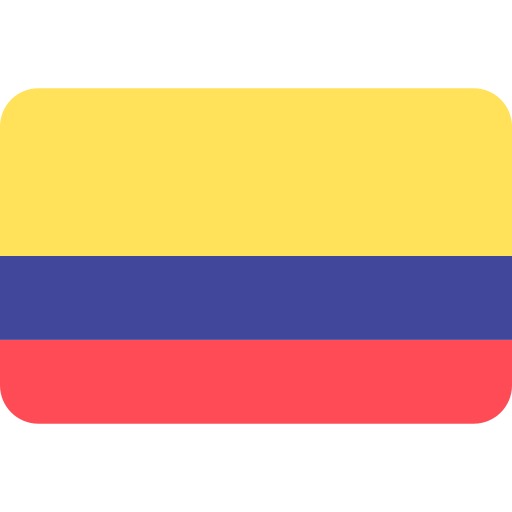In the midst of COP-16, the use of debt-for-nature swaps continues to be explored. For Colombia, this has been a recurring theme since President Iván Duque, with continuity in the statements of Gustavo Petro.
Conforme a los criterios de

(Lea esta historia en español, aquí)
The truth is that, in addition to political statements, there are countries that have already reached agreements of this type, which are considered to be of great importance. However, Colombia is not among the countries that have announced agreements in line with the new model.
As Anderson Caputo, head of connectivity, markets and finance at the Inter-American Development Bank (IDB), points out: "To date, five such agreements have been signed: Belize (2021), Barbados (2022), Ecuador (2023), Gabon (2024) and El Salvador (2024), for a total nominal value of US$3.8 billion". Prior to this new model, 144 bilateral or multilateral transactions were signed between 1987 and 2015, for a total of US$3.1 billion, according to Caputo.
In this new model, the IDB executive explains, operations are carried out in the capital market, where countries issue debt guaranteed by multilateral organisations such as the IDB or other co-guarantors (such as UBS or Credit Suisse, in the case of Ecuador) and use the proceeds to buy back more expensive current debt. These operations generate savings that are used to finance conservation activities. Caputo stresses that this is not debt cancellation.
Swap models are still being analysed to improve them, for example by the group of independent experts convened by the governments of Colombia, Kenya, France and Germany, or by the working group led by the IDB together with the US International Development Finance Corporation (DFC).
In their 'Interim Report of the Expert Review on Debt, Nature and Climate', presented two weeks ago in Washington at the biannual meetings of the International Monetary Fund (IMF) and the World Bank, the independent experts say that governments' unfunded obligations play an important role because "higher debt service creates incentives and demands for increased resource extraction", i.e. a vicious circle.
Meanwhile, the IDB and the DFC Group are seeking to promote financial instruments "for sustainable sovereign financing linked to climate and nature" and are developing "Voluntary Principles for the Use of Risk Mitigation Instruments in Support of Sustainability-Linked Finance" to scale up and replicate such operations.

Carlos Felipe Jaramillo, vicepresidente del Banco Mundial para América Latina y el Caribe
Foto:Milton Díaz / EL TIEMPO
Such efforts can serve as a response to the fact that countries that are rich in biodiversity but not in economic terms are under pressure, especially from developed countries, to take care of the ecosystems in their territories. According to Carlos Felipe Jaramillo, World Bank Vice President for Latin America and the Caribbean, "it makes no sense for the burden to fall on a few (countries) when the benefits will reach the entire planet.
The challenge is to turn the strength of genetic diversity - of living species, communities, ecosystems or landscapes - into economic strength. Biodiversity, says Gustavo Manrique, former Environment Minister and former Foreign Minister of Ecuador, is "the new currency that the world needs", and countries like his, or those in this part of the world, have it.
This abundance in certain parts of the world prompts the interim report of the group of independent experts to point out that it would be possible to move towards a virtuous circle with changes in financing, which would require a significant increase in domestic resource mobilisation, but also "more international concessional financing and an effective response to unsustainable debt burdens and costs, so that countries can invest more in climate- and nature-friendly development".
In 2025, these experts are expected to make concrete recommendations to reduce debt burdens and provide additional resources for sustainable development, and to ensure that future lending mitigates rather than exacerbates crises.
What impact and relief can be expected from debt swaps?
How far could debt relief go? For Juan Camilo Cárdenas, one of the 17 independent experts from different countries, "it is difficult to estimate and requires more research because of the complexity of each case. For example, many countries have a mix of public and private debt, and each has a different CO2-equivalent mitigation potential due to the diversity of their ecosystems. CO2 removal can vary from 4 to 40 tonnes of CO2 equivalent per hectare of forest per year.

Juan Camilo Cárdenas, director del Centro de los Objetivos de Desarrollo Sostenible (Cods) de la Universidad de los Andes.
Foto:Universidad de los Andes
The most far-reaching debt-for-nature swaps to date are those of Ecuador and El Salvador. In the first case, the amount was $1.1 billion to expand the marine reserve adjacent to the Galapagos Islands.
Two weeks ago, El Salvador signed a $1 billion agreement with the Latin American Development Bank (CAF) to protect the Lempa River.
In the case of Ecuador, it represented 1.7% of central government gross debt at the time of the agreement. In El Salvador it was 3.3%.
For Jaramillo, "the volumes (of swaps) are small". Of El Salvador's swap, he comments that "it will free up some resources" but "the savings are relatively small on an annual basis. Something with a greater return for the people is needed. I have more faith in mechanisms like payment for environmental services."
According to Cárdenas, who is also a professor and researcher at the University of Massachusetts at Amherst and the University of the Andes, "one way to widen the scope is to explore the negotiation of coalitions of countries that can jointly offer climate actions of carbon sequestration or emission reduction at lower cost, or the conservation of areas of high biodiversity that can generate biodiversity credits, with positive effects for the creditor countries and at lower cost".
Explaining this option, he says two possible examples could be blocs of Caribbean countries to protect coral reefs, or Amazonian countries "to conserve one of the most important planetary commons today for carbon sequestration and climate regulation".
Clear and verifiable commitments on access to finance
One factor that facilitates these exchanges is that the party taking on the conservation tasks recognises that it is better to conserve than to use: "What can we do," asks Jaramillo, "so that a tree in the Chocó or in the Amazon generates more return for the local Afro-descendant indigenous communities, so that it is worth more alive and healthy than deforestation or logging?
He replies: "We have some studies at the global level that show that for every dollar invested in protecting protected areas and promoting nature-based tourism, six dollars are generated. For countries, the return on investment in conservation is very high.
Lula has proposed it at the G20 and has announced several times that there is a pilot idea that they want to perfect and launch at the COP in Bethlehem next year
As Jaramillo mentions, there are instruments other than debt swaps, such as payments for environmental services. In any case, financial resources are received within the framework of the parties' commitments, so that the amounts received are linked to the specific tasks proposed, i.e. verifiable and measurable actions.
"The goals the country wants to achieve must be ambitious," says the IDB's Caputo, "and represent a substantial improvement in the relevant indicator.
"An independent verifier," he continues, "certifies whether the targets have been met by the agreed date, and if not, the country must pay a fine that is used to fund conservation projects.
As an example of verification, the World Bank's Jaramillo cites Brazil's idea of a Tropical Forest Financing Fund (TFFF): "Lula has proposed it at the G20 and has announced several times that there is a pilot idea that they want to perfect and launch at the COP in Bethlehem next year. It is the idea of a financial innovation to be able to make annual payments to countries that commit themselves and that would effectively verify, with satellites and modern technology, that they stop or reduce deforestation".
In the words of Cárdenas of the Group of Independent Experts, "verification of debtor countries' commitments should be based on a combination of information technologies using high-resolution satellite imagery and community monitoring on the ground, as a complement to strengthening community management of ecosystems".
Availability of multilateral bank resources
With regard to programmes other than debt swaps already underway at the World Bank, Jaramillo explains that resources are being obtained, "many of them concessional, subsidised and in many cases free". The vice-president cites the example of Sustainable Landscapes of the Amazon, the company's main programme in Latin America: in more than a decade, "we have been able to expand and contribute to the creation of 7 million hectares protected and better managed throughout the region, with 100% free resources, mainly from the Global Environment Facility (GEF)".
In addition, on 25 October, during the biannual meetings of the Bank and the IMF, the World Bank, together with the Inter-American Development Bank (IDB), launched Amazonía Viva, a programme with three components: conservation of natural resources, inclusive economic opportunities and improvement of living standards. "We are trying to involve the private sector, which is interested in doing business and promoting these activities," says Jaramillo.
For its part, the IDB and IDB Invest will provide a total of $2 billion in financing for nature in 2023. According to the institution, this figure represents almost 13 percent of its total approvals. "At more than half," said Executive Vice President Jordan Schwartz at COP-16, "we are meeting the highest standard of positive financing for nature.
The amount includes $1.33 billion from the public sector and $765 million from the private sector.
Editor's note: This text is an artificially intelligent English translation of the original Spanish version, which can be found here. Any comment, please write to berdav@eltiempo.com

.png) hace 5 meses
62
hace 5 meses
62








 English (US) ·
English (US) ·  Spanish (CO) ·
Spanish (CO) ·